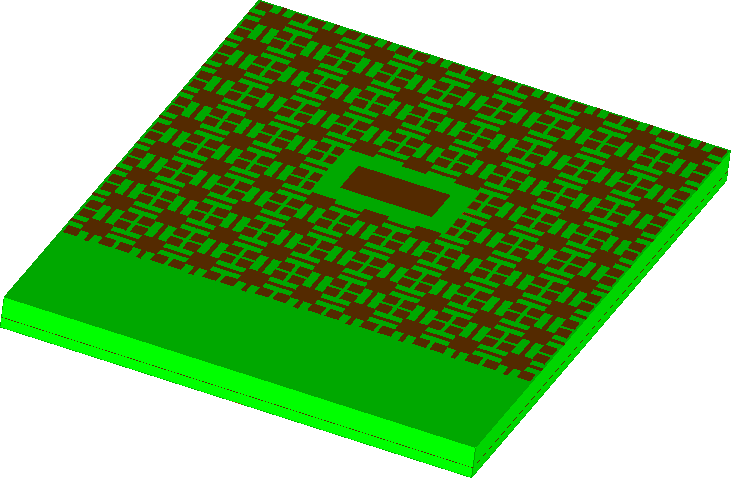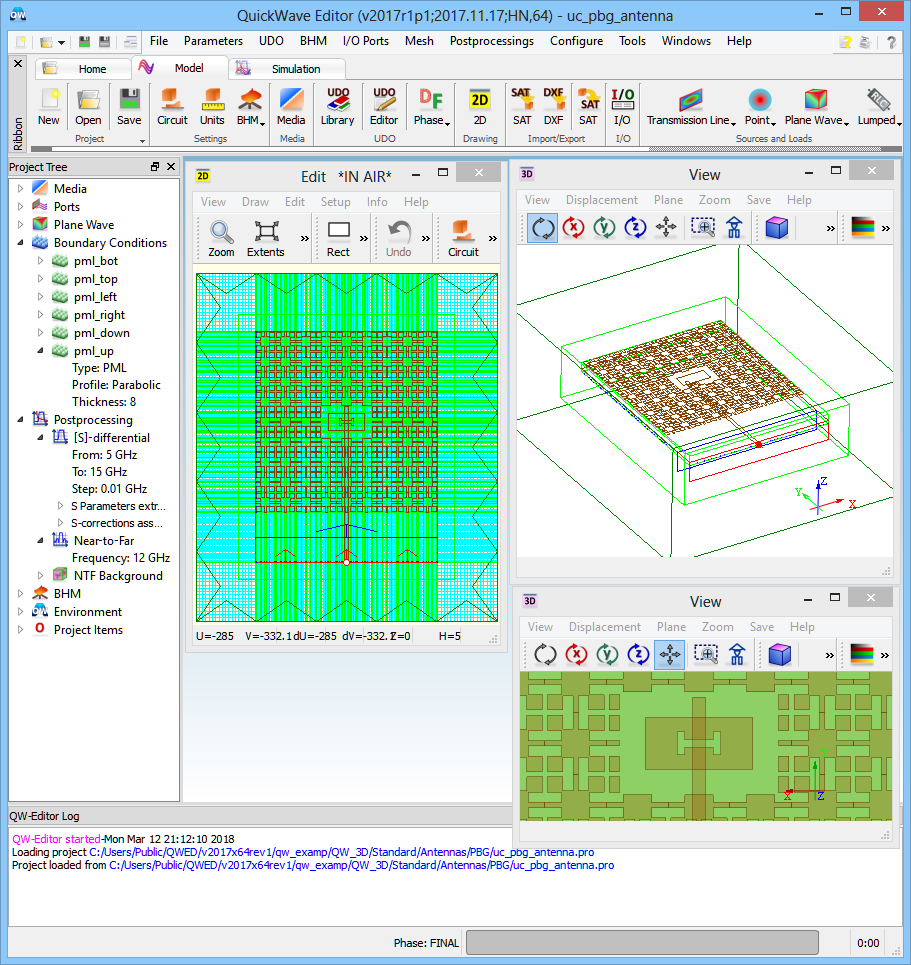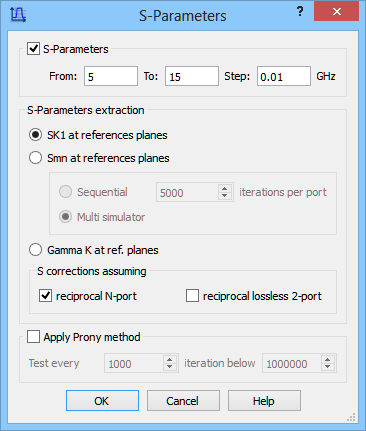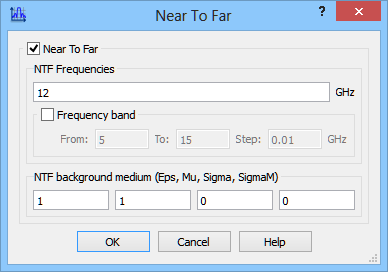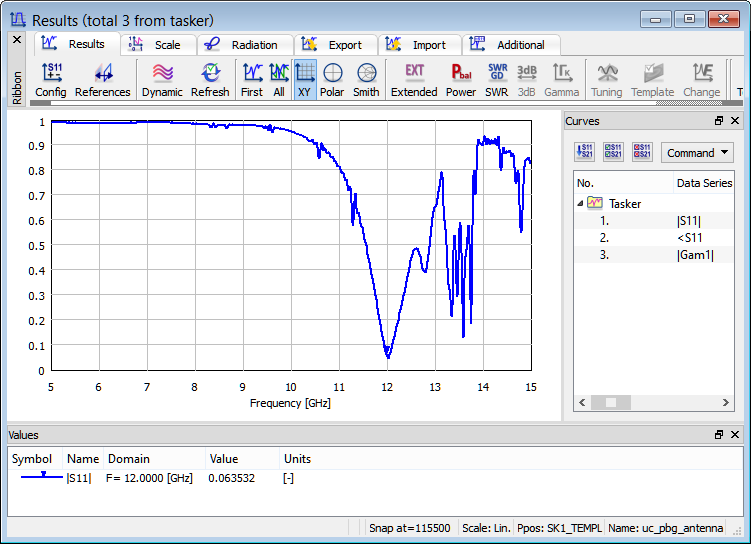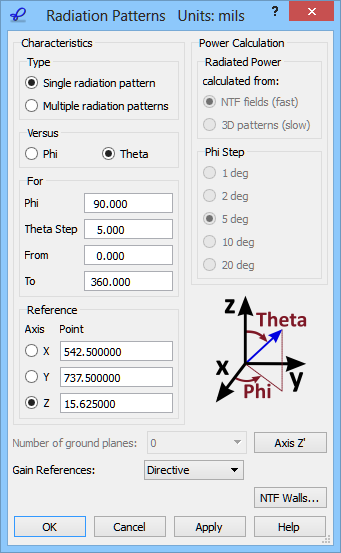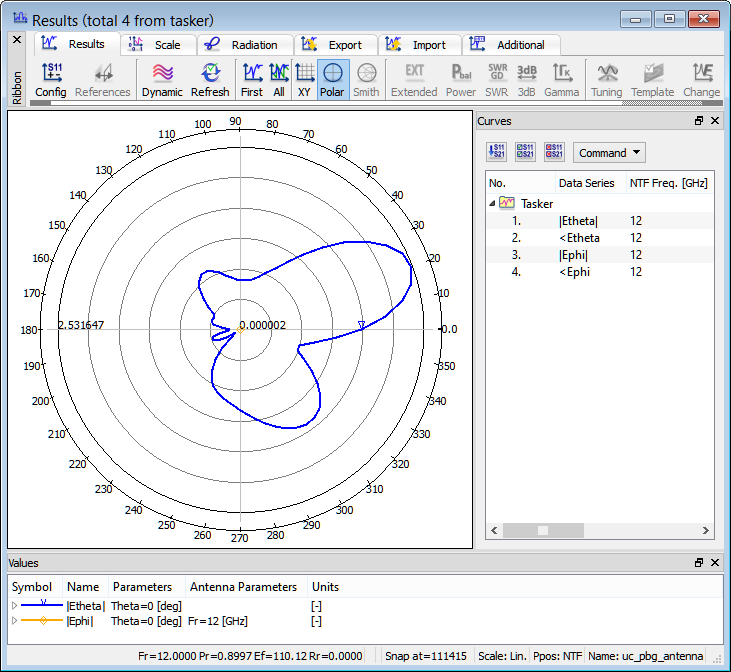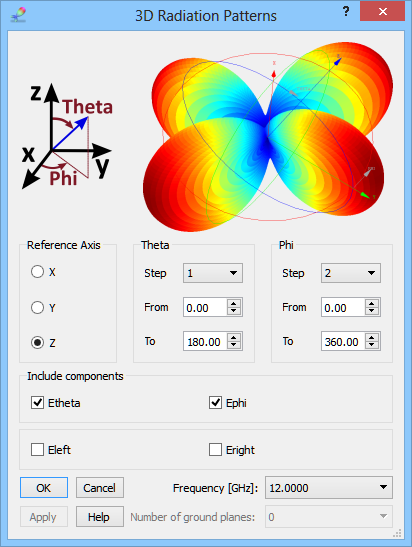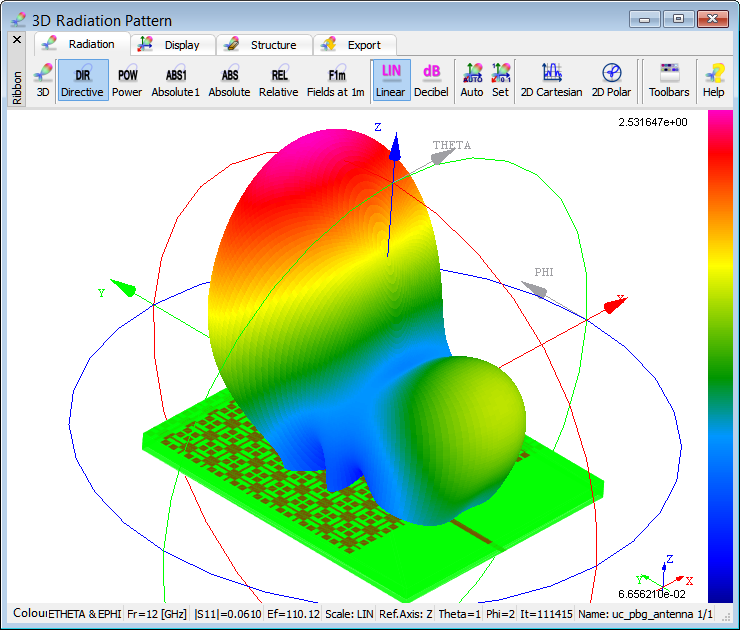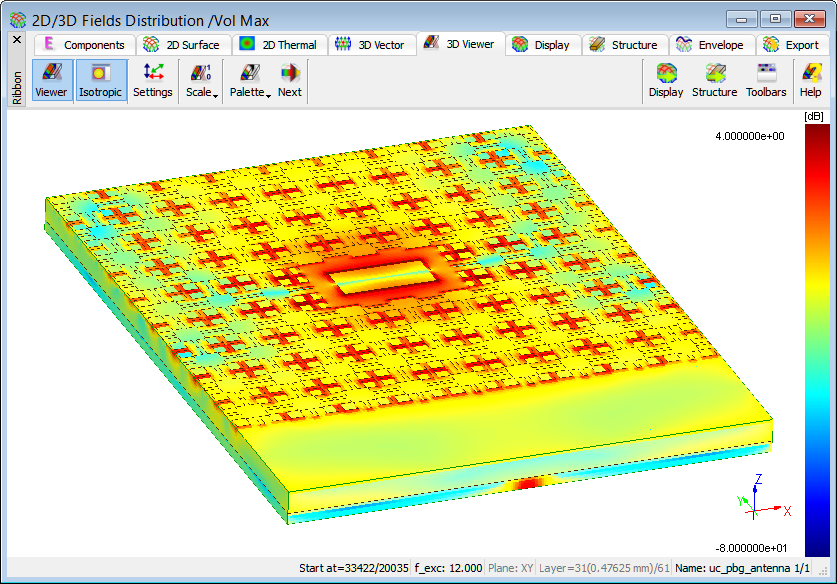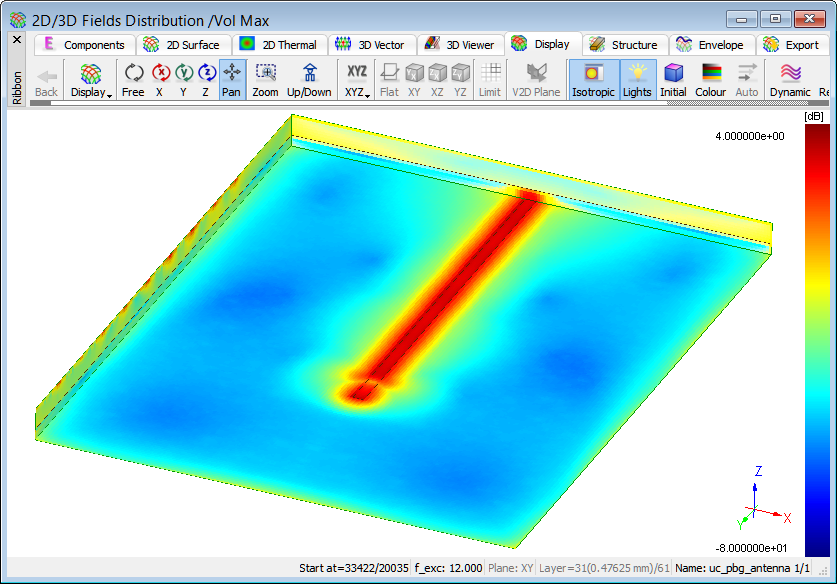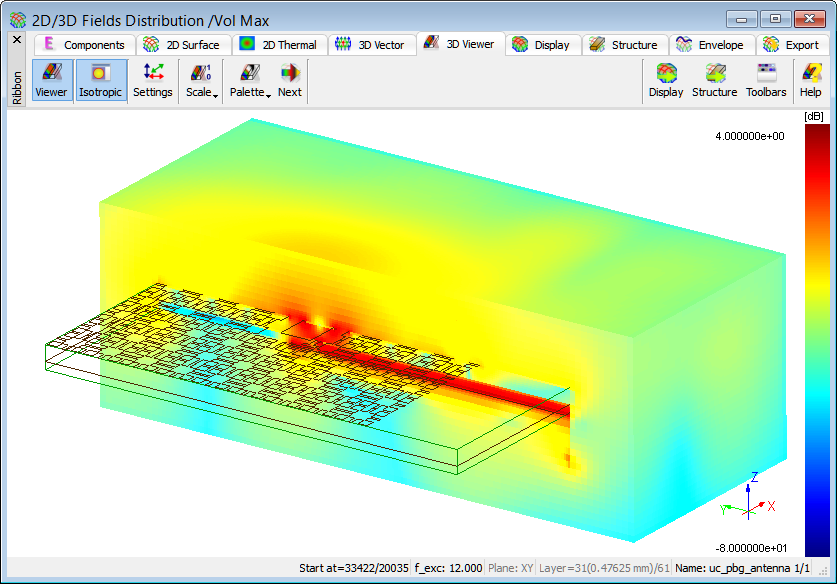Aperture-coupled patch antenna
The present example considers an aperture-coupled patch antenna.
The aperture-coupled patch antenna.
The aperture-coupled patch antenna project in QW-Editor.
Simulation model consists of the aperture-coupled patch antenna on a uniplanar photonic-bandgap substrate surrounded by NTF and PML boxes.
For the purpose of calculating reflection characteristic, S-Parameters postprocessing is activated from 5 GHz to 15 GHz, with a frequency step of 0.01 GHz.
The radiation pattern calculation is set at 12 GHz.
S-Parameters postprocessing and Near To Far postprocessing configuration dialogues.
Reflection coefficient of the aperture-coupled antenna.
We wish to calculate the 2D radiation patterns versus angle Theta varying between 0 and 360 degrees with a step of 5 degree. They will be calculated with a constant angle Phi equal to 90 degrees. The definition of the angles is explained in the lower right part of the 2D Radiation Patterns configuration dialogue. Note that this definition depends on the choice of the reference axis. The angle Theta is always counted from the reference axis (Z in the considered example). The angle Phi is always counted around it.
2D Radiation Patterns configuration dialogue.
The reference axis can be set to X, Y or Z by clicking respective radio buttons in the Axis column of the dialogue. There is also an option to define an arbitrary reference axis. For an example of application of this option, please refer to the Two dipoles in free space excited in phase.
We can also set the reference point or in other words the origin of the coordinate system for the NTF transformation. The position of the reference point does not influence the absolute values of the radiation patterns (in lossless NTF background medium) but it does influence their phase characteristics. Moving the reference point can be helpful in a search for the antenna electrical centre. The reference point position is expressed in the same coordinates and units as those used in the project and defined in QW-Editor. To recall what units have been used, we can just take a look at the title bar of the window. In the considered example we see Units: mm.
2D radiation patterns calculated at 12 GHz.
3D radiation pattern, with both Phi and Theta varying in steps can be calculated in the 3D Radiation Pattern window. The 3D Radiation Patterns dialogue allows setting the reference axis and steps for angles Phi and Theta, defined with respect to that axis in the same way as for the 2D radiation pattern case. A single frequency is also selected.
3D Radiation Patterns configuration dialogue.
3D radiation pattern calculated at 12 GHz.
Distribution of time-maximum envelope of total E field at 12 GHz.
Distribution of time-maximum envelope of total E field at 12 GHz over the antenna.



